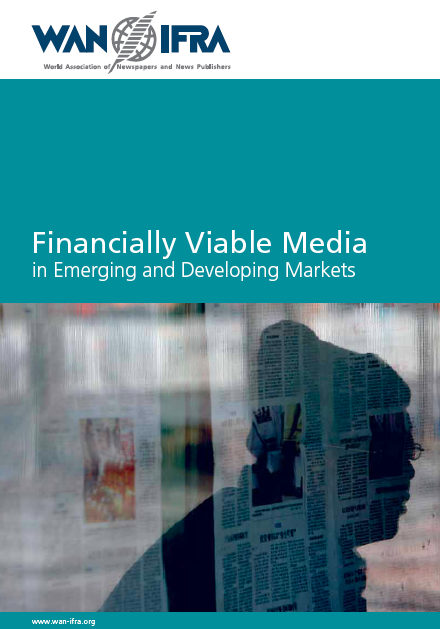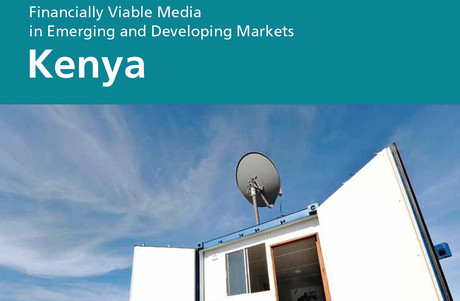Back to Media Development homepage
WAN-IFRA is taking a fresh look at media development, investigating the business perspectives of media executives who operate in less favourable market environments.
The research findings offer a valuable tool for both media and the international donor community. It offers a major contribution to efforts to sustain the independent media that is crucial to building more democratic and prosperous societies.
The main report can be downloaded for free, with individual country reports also available that provide an in-depth analysis of current threats to sustainable media businesses in emerging markets.
Download the free reports below.
 Financially Viable Media in Emerging and Developing Markets
Financially Viable Media in Emerging and Developing Markets
The flagship report, released to donor agencies and media development experts at a seminar at the Organisation for Economic Cooperation and Development in Paris, identifies the challenges and opportunities for independent media in achieving financial sustainability while maintaining editorial independence.
Among all the world’s media markets, the size and state of African media are least understood, due to a lack of viable data and research. A new report on media in Kenya, released today by the World Association of Newspapers and News Publishers (WAN-IFRA) and the African Media Initiative (AMI), is a step toward filling this knowledge gap.
Egypt, the most populous country in the Arab world, also possesses one of the region’s oldest journalism cultures.
Although Georgia has a high literacy rate and easy access to media, on-going economic instability has shattered the national media market.
With a vibrant, young population, an emerging middle class, and the largest economy in the region, Guatemala offers an attractive setting for the development of innovative models of journalism.
Mozambique, an impoverished nation of some 20 million in southeast Africa, offers an example of a media market in an early phase of development.
Vietnam’s newspaper sector is fully state-owned and exhibits a clearly defined “two tier” system in which the lower and substantially larger tier acts as a propaganda machine for the state and, in return, receives heavy subsidies.













